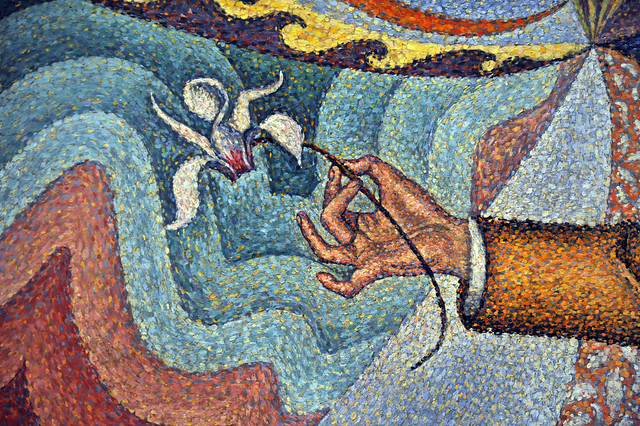http://m3weeks.tumblr.com/post/41870735573/paul-signac-opus-217-against-the-enamel-of-a
The topic of today’s discussion involves symbolist and pre-Fauvism painter, Paul Signac, who is best known for his belief in combining themes of pointillism, divisionism, and music into his artwork. Thus, before discussing Signac and his work any further, I suggest clicking the link of Claude Debussy's composition Prelude a l'apres-midi d'un faune listed above in order to view the artwork the way Signac thought art should be viewed in 1890. It should be noted that Signac was a major supporter and mentored by Seurat, which is where he developed his skill and use of applying divisionism and pointillism to his paintings. Divisionism occurs when two colors are pushed together in order to create the impression of a third color, and Pointillism is the process of using the theory of divisionism and applying it to paint on canvas. The main difference between Signac and his mentor Seurat is Signac’s incorporation of music into his artwork (a major theme in Modernist Art).
In Opus 217, Against the Enamel of a Background Rhythmic with Beats and Angles, Tones, and Tints, Portrait of M. Felix Feneon 1890 we see how each of these features contribute the paintings overall meaning. This painting makes me feel the power of music, you look at this painting and that’s the first thing that comes to mind. The colors used and the images of stars and optical allusions remind me of a circus, or a dream. In the painting above we clearly see Signac’s use of color and pointillism as well as his portrayal of music in both the title as well as the background of the painting. Signac’s skill and style distinguished him from other nineteenth-century artists and influenced the Fauvism movements as well as artists such as Henri Matisse.
-1890-small.jpg)

No comments:
Post a Comment